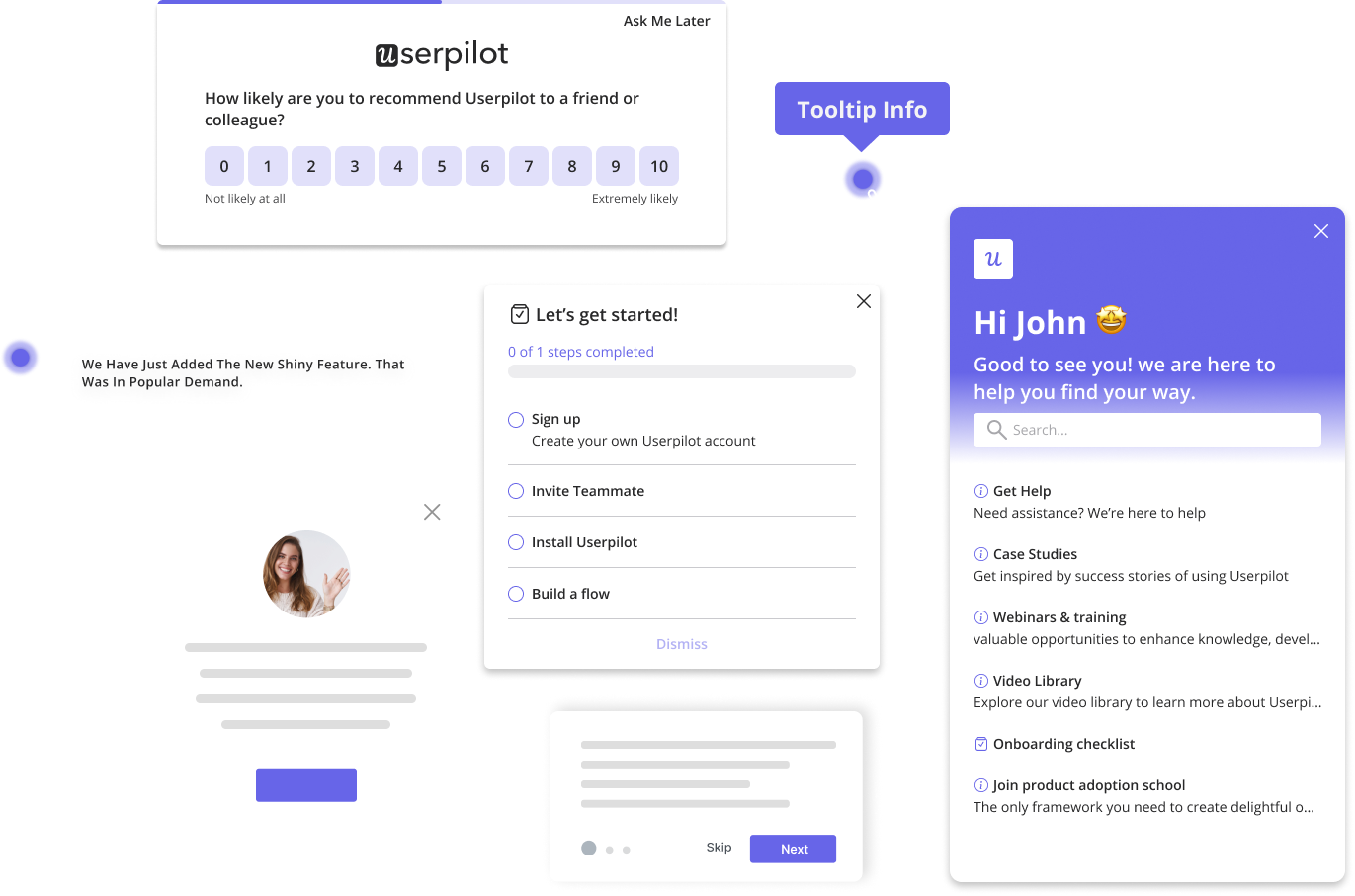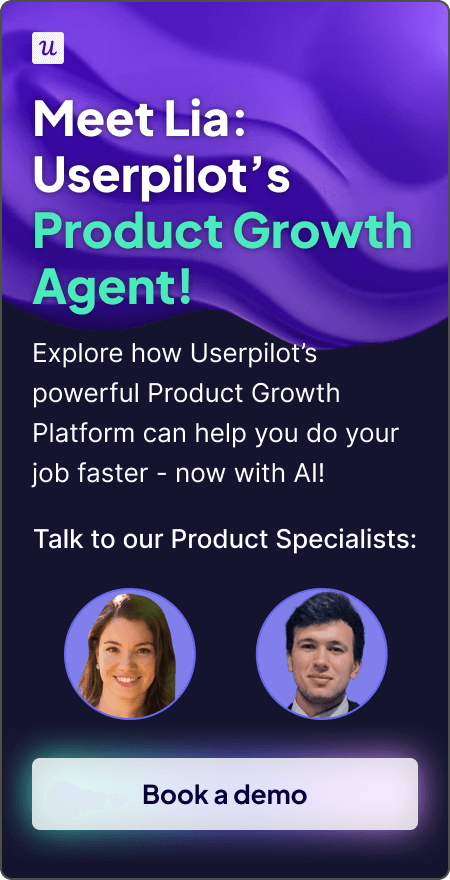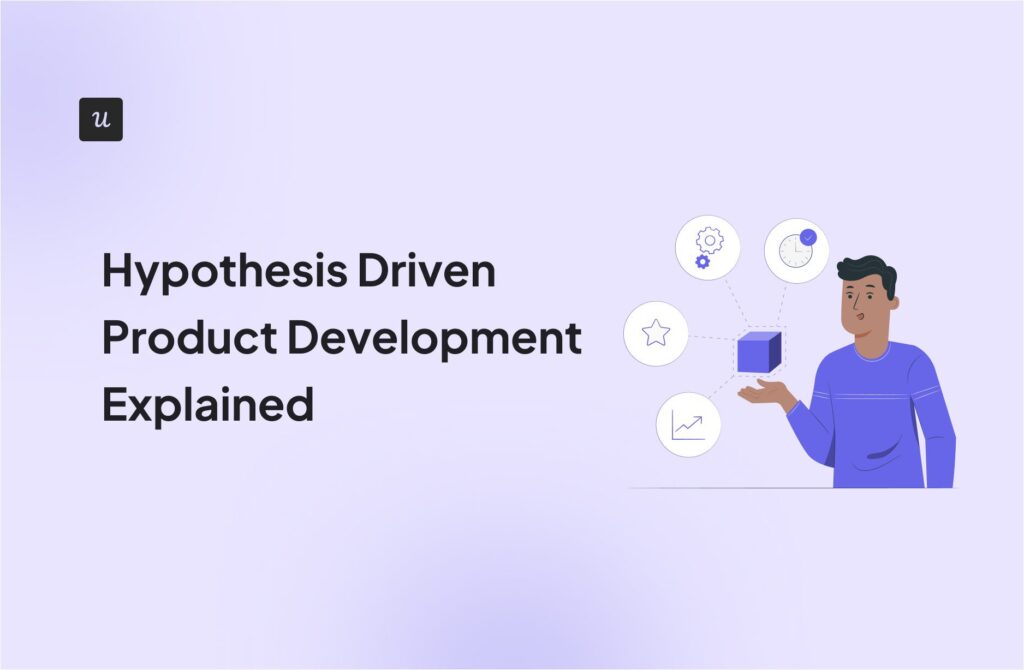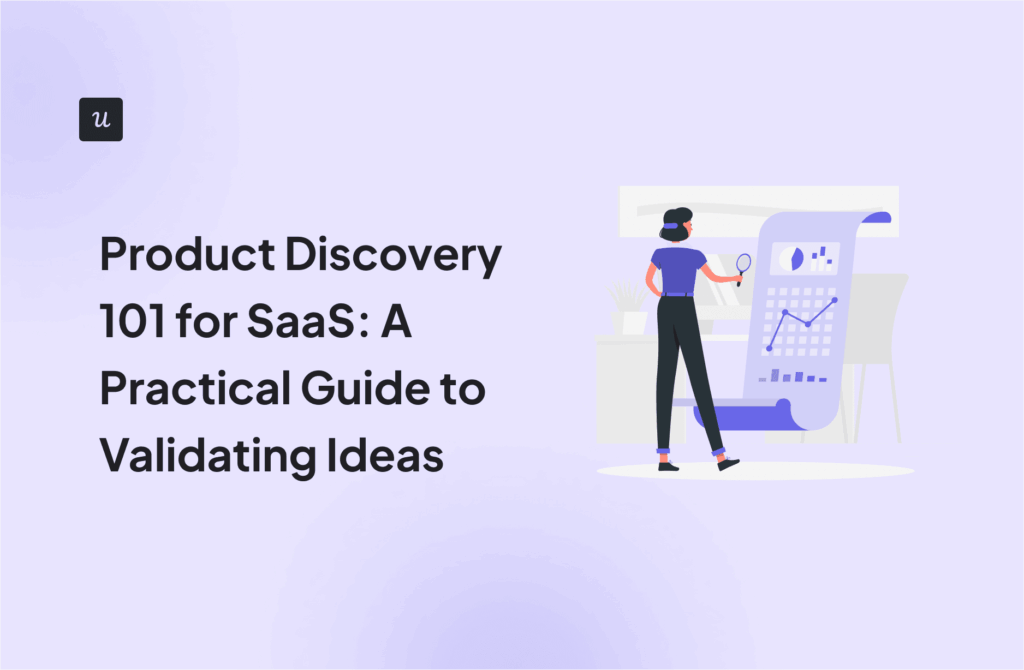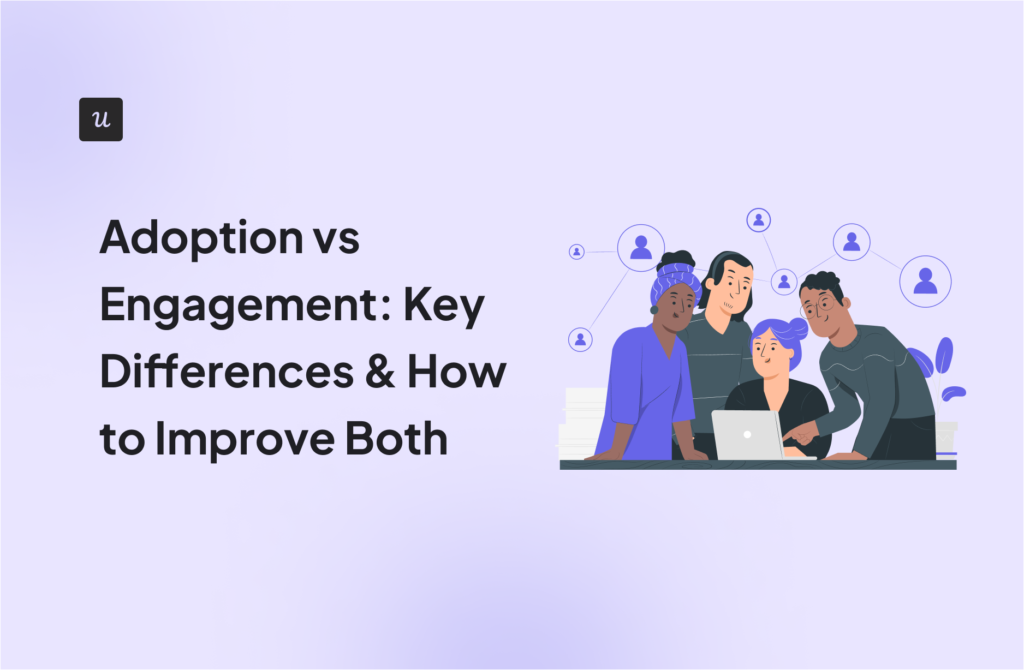
Free trial or demo? It’s a question we’ve revisited again and again, not because we’re indecisive, but because the answer keeps changing.
When we first launched, we leaned on demos. Our product had depth, and we needed the space to explain it. But as we grew, we realized we were missing a segment of potential customers who didn’t want to talk to sales; they just wanted to explore the product on their own terms.
So we started offering both a free trial and a product demo.
In this article, I’ll break down the pros and cons of each approach, and share what we learned at Userpilot by running both in parallel, including when to lean into each business model and how to strike the right balance.
What’s the primary goal for your user acquisition strategy?
How complex is your product for a new user to set up and see value?
Who is your primary target customer?
Based on your needs, a self-serve Free Trial seems like a great fit!
A free trial model is excellent for products that are easy to adopt. It allows you to scale user acquisition quickly and lets the product’s value speak for itself. This is a key consideration in the free trial vs demo in saas debate. To see how you can perfect the free trial experience with in-app guidance, check out Userpilot.
Based on your needs, a guided Demo is the way to go!
A demo-led model is perfect for more complex products targeting mid-market or enterprise clients. It ensures potential customers fully understand your product’s value, leading to higher quality leads and better conversion rates. This is a critical factor when deciding between a free trial vs demo in saas. Let us show you how Userpilot can support your high-touch sales process.
Try Userpilot Now
See Why 1,000+ Teams Choose Userpilot
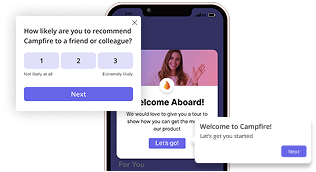
What is the difference between self-serve trial and demo sales models in SaaS?
A self-serve trial is either a free trial or a freemium business model where the user gets to explore the premium version of your product or service firsthand before they buy.
A free trial is like the no-nonsense bartender that lets you figure everything out on your own. “Here are the features we have. All you need to do is give me your email address, and you can try anything you want.”
A demo sales model is when prospective customers have to sign up for a one-on-one meeting before using the product.
A demo is when salespeople are the gatekeepers to the product. They are like the bartender at an incredibly fancy establishment that tells you they only serve cocktails. “Here is a demo of everything possible with our product.”

A free trial nets you a ton of users, but just like the no-nonsense bar, they will come in waves and just as quickly move on to the next one if they don’t see the value.
With a demo, you can qualify leads and make prospects see the value quicker, and they are better informed about the product they are consuming.
The benefits of each model will depend on which target audience connects best with your vision and the product you offer.
What are the benefits of a free trial vs a demo and vice versa?
Let’s look in detail at how both free trials and demos benefit your company (and customers), along with their drawbacks.
In short, here’s why free trials work:
✅ Give users a chance to explore the product on their own
✅ Help convert high-intent users without friction
✅ Provide valuable behavioral data
✅ Reduce the need for early sales touchpoints
✅ Support faster iteration through user feedback
If we are talking about the benefits of a free trial, the first thing you have to begin with is the PQL or product-qualified lead. These are leads that have signed up for your self-serve trial. They have the benefit of forming their own opinion about your product and experiencing the “Aha Moment” on their own.
This is where the free trial model gives a significant advantage over gated demos: Users get hands-on experience with the full functionality of your tool.
Thus, they are much warmer than the majority of MQLs that will come into your pipeline. If you have users who convert, you can then actively monitor them and see their specific actions. This information makes it easier to remove any obstacles for other users, so everyone has a uniform and optimized user journey.
You can set your free trial period based on how long it takes to reach your activation point. Ours, for example, is a limited period of 14 days.
If you have existing customer data, you can also use tools like Userpilot to see the average time it takes your customers to move through the activation funnel. From there, you can decide the ideal trial period for your product.

Depending on the customers’ experience, if they perform your key actions and use your key features, it’s more likely they’ll upgrade before the trial period ends.
An effective onboarding process, including an interactive walkthrough and a checklist, can help users achieve the activation point and become paying customers.

At the same time, here’s where free trials can fall short:
❌ High drop-off or inactivity due to lack of guidance
❌ Many users abandon the product without seeing value
❌ Free trials often don’t answer all user questions
❌ Risk of users gaming the system with multiple signups
❌ Weak onboarding leads to poor feature adoption
The problem with free trial or freemium offerings is that they experience a large rate of abandonment, disinterest, or abuse.
There is a reason the average conversion rate for SaaS hovers around 14%. Many users are unable to answer the questions they have from a free trial alone. If they enter your product and it is overwhelming (likely because of an empty state), they will hit the road.
Life also gets busy, so it is common for people to sign up for a free trial, get distracted, and forget about the product. Even worse is if they come back and they don’t know where they left off. Although a checklist usually mitigates that.

Then you have the cases where half of your user base is comprised of users using multiple email addresses to continuously get free trials with no intention of buying. If that’s the case, a paid trial might be the solution, and a subscription management software tool can help you streamline subscriptions.
If you find your product experiencing any of these issues, the first place to check is your onboarding. You will have to look into how you help users get from the activation point to using all of your key features and then using your secondary features.
These stages in their customer journey hinge on how well they understand your product, and there are a variety of tactics at your disposal.
However, if you still can’t find a straight answer, the next step would be to look into demos as your acquisition model.
In short, here’s why demos work:
✅ Quicker way to communicate product value
✅ Help uncover customer pain points early
✅ Let sales teams tailor the message to each buyer
✅ Reduce confusion for complex or high-stakes products
✅ Increase deal size and lifetime value through trust-building conversations
Many companies have found that demos are the most effective way to drive customer acquisition and achieve a more substantial lifetime value. This model allows your users to spend the shortest amount of time researching your product while having most of their questions answered. Your sales team can determine if your product solves the prospect’s goals or not.
I’ve seen this work best when teams use in-app engagement data to build smarter demo narratives.
So what are the negatives of demos?
❌ Slower time-to-product for the user
❌ More expensive and resource-heavy to run
❌ Doesn’t scale well for early-stage or high-volume needs
❌ Requires fully built sales processes before product exposure
❌ Creates friction for users who just want to try the product themselves
Demos may not be for you if you have a new product or an established product, trying to get lots of people to try a new membership offering.
It takes a lot more effort from your marketing and sales teams to try and get leads to sign up for a demo than a free trial. That leads to higher costs for your sales team to show all these new prospects around and the marketing team to create those assets. You might also need to employ an extensive sales team to deal with all the companies requesting demos.
You need the right people to execute these endeavors, which takes more budget and time before you actually have people inside the product. That means developing entire sales processes and marketing campaigns for a product that only you and your team really understand if it works.

If you are early-stage, you will want to grow your user base as fast as possible, so you’ll need people to actually try out your product or feature. Plus, if you are trying to meet paid subscription goals, it puts a lot of pressure on your company to meet them through only a demo sign-up. In this case, the most viable alternative strategies are offering free trials or even a beta version.
Let’s dive into the right time to implement a free trial.
When should SaaS businesses consider a free trial vs demos?
Should you rather provide a good free trial experience over demos? Let’s look at a few factors.
Experimentation
If you look at most SaaS companies that offered only a free trial when they started, like Canva, Airtable, or Notion, you will notice many similarities.
The first is that they were looking for the broadest number of users to start using their product, so they could learn what worked and what didn’t. They tested product experiences at scale and saw what the ideal user behavior was.
If you still don’t know where your activation point is or when the exact moment is that users reach their “Aha moment,” then a free trial is a great way to discover them.
Plus, if you have a great onboarding experience, you’ll increase your chances of converting trial users during the trial phase. This can be done with an interactive walkthrough, personalized welcome modals, checklists, and email follow-up.
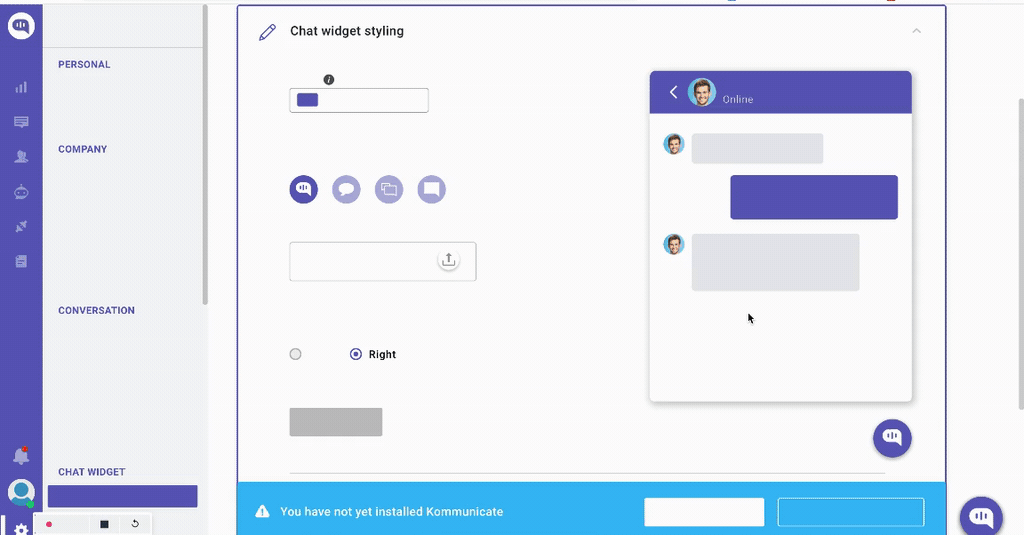
The product is easy to use
The second case when you don’t need a demo is when your product is so simple that you can just implement a self-service motion.
The user can successfully set up and use the basic version without any outside intervention. The implementation time might just take a couple of minutes. There is a low price point that creates very little friction in the buying process.

The target user isn’t complicated
The third case is when your target users understand the app and don’t have to be tech experts to understand the product.
Well, the exception is if you don’t understand Excel – Airtable might be a nightmare to figure out. Regardless, their target audience is mostly one person or a single department that doesn’t require company-wide approval to purchase.

They aren’t security-sensitive products and don’t require top decision-makers’ approval. Most non-decision makers have the time to research various products and spend it on a free trial.
Example: A marketing manager has the time to explore an email marketing software’s features and come to a conclusion if it will help them automate sending out promotional emails. They probably have access to the company card. All they have to do is let the CEO or their superior know that they will be purchasing it. There is little time to wait for their approval.
Now, let’s see when companies should implement a demo-sales model.
When should SaaS businesses consider a demo vs a free trial?
A report by Vainu found that 37% of SaaS products use a demo-sales model or have it as an option. This number has likely increased in recent years. Why?
Well, it comes down to two reasons:
- Most software is complex
- You can achieve much more revenue through bigger deals and enterprise-level or mid-market customers.

Most software is complex
Starting with the first point, if software were easy, everyone would be a developer. Imagine a world of flying cars and uploading all of our thoughts to the cloud. Although coding is becoming a much more universal skill, we are still a long way from the world’s population all becoming literate in JavaScript.
As a result, many SaaS products have a ton of features and require assistance from a customer success manager or IT professional to get a new user set up.
If the user has to load a lot of data to understand how the product works, a self-service track may leave a new customer scratching their head.
So, many companies opt to go the demo route to answer any questions a prospect might have. Now there is no confusion when they enter the product; they understand the basic concepts and how it will help them get their job done. They also understand what makes your product different.
Mid-market and enterprise customers have different requirements
The more complex your product is, the higher up-market you will have to go and the higher the value of the average contract. If you have an average ACV (Annual contract value) of more than $1K, a demo is the right choice. However, now you are dealing with a completely different market and a whole different breed of prospects.
This is either a transactional market for medium-sized companies or an enterprise market for large corporations. You will be talking with decision-makers who don’t want to do the work for these types of organizations. They don’t have time to figure out a product on their own and actually want a demo.
Why?
Well, the price point is higher, so it takes much more consideration from the buyer, and they need consensus from the entire company before they pull the trigger. As a result, the average sales cycle for mid-market customers is 30 days.
For enterprise customers, it can be up to 9 months. And here is where the data leans in favor of high touch vs low touch. Each cycle requires more than 7.5 touch points with a salesperson.
An example of this is a product like Salesforce that will impact the organization as a whole. It requires integrations with the company’s tech stack and approval and coordination from the sales, marketing, and IT departments. It’s a huge time commitment on the whole company’s part. Buyers want to be absolutely certain when they are making that kind of investment.
If your product hits either of those two main points, you probably already have a demo or should implement one immediately. Now, let’s look at our own use case and why experimenting with both options leads to better results.
How about a demo AND a free trial? – Userpilot case-study
Regardless of your pricing or company size, people like to learn about products in different ways.
Some people are completely content to hit the “demo” button on your site and go through the process with a salesperson to learn more. Other buyers want to use their own time to see if the product solves their problem before speaking to anybody.
Surprisingly, Asana has 40% of its revenue from sales and 60% from self-service. Like us at Userpilot, they follow a more transactional model and try to accommodate both types of buyers.
It makes more sense to have this combination until you figure out what most of your customers prefer, or continue to offer a healthy mix.
At Userpilot, we have always had the demo sales model because we are a more mid-market solution with a more complex product. It’s not a UX issue – it’s simply that digital adoption platforms like ours consist of several products catering to very different use cases. And having a Chrome extension running on our users’ products did not exactly help make the onboarding easier. But once customers were onboard with the help of a Customer Success Manager – boy, did we see those activation rates increase!
We ran an experiment (and recently brought it back) when we had developed the UX for a free-trial offering.
We included a small start a free trial button in the main menu as a secondary call to action, with the main one being a book a demo.

Key takeaways from our CEO and Head of Sales:
- From the times we tried it, it worked better when the product was cheaper and had fewer features. We closed smaller deals.
- We converted relatively well with the free trial users, especially when we focused on improving UX and onboarding. Those who reached activation and became satisfied trial users often continued to explore more advanced product features.
- We had to improve the functionality and the UX a bit so users could figure everything out on their own. Ultimately, we would like to always include the free trial as a secondary option.
- In a perfect world, we offer three entry options… free trial, demo, and a call/meeting…. based on a mix of who they are (large vs small) and how they want to go about their learning/buying process. Balancing some control from our side and also accommodating their wishes.
So free trials or product demos?
There will always be a mix of prospects. These are the people who ultimately decide to use your product. By catering to both parties, you can provide even more personalized product experiences that engage users and enable customer retention.
Our recommendation is to find something in between or a mix of both for mid-market companies. This allows each group of users to see the end product and choose how they would like to learn if it is the solution they need.
If you want to see how Userpilot can help you decide if a free trial is better for your company or a demo, book a demo call with our team!



